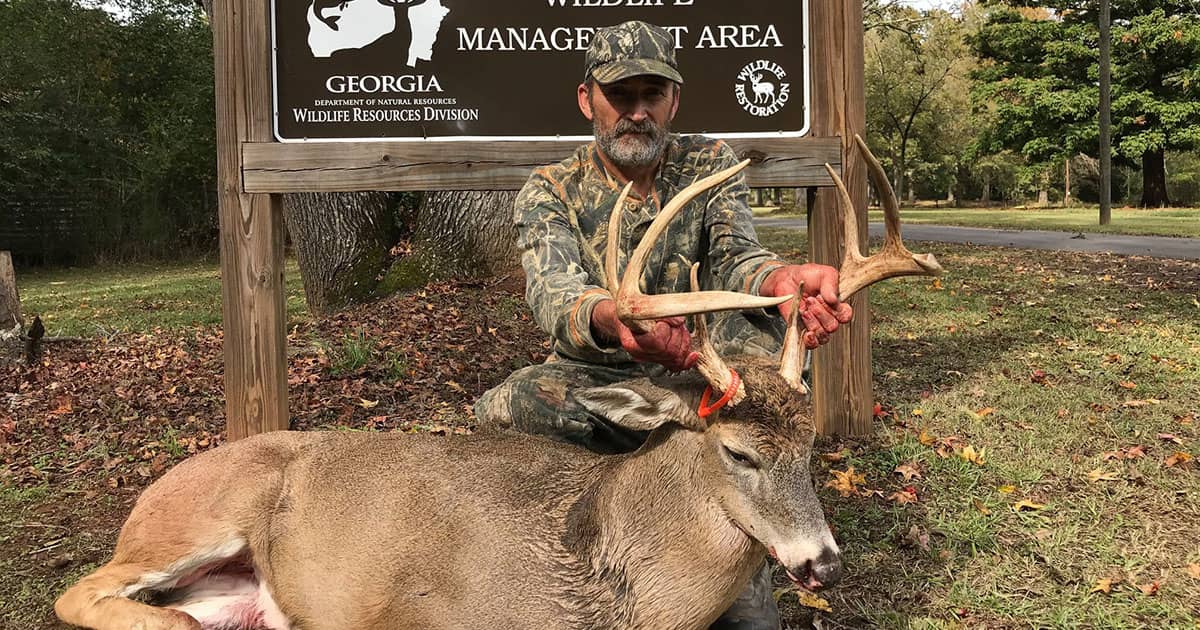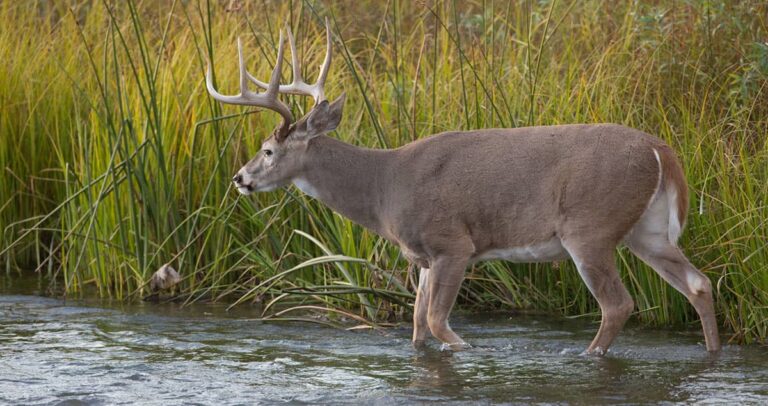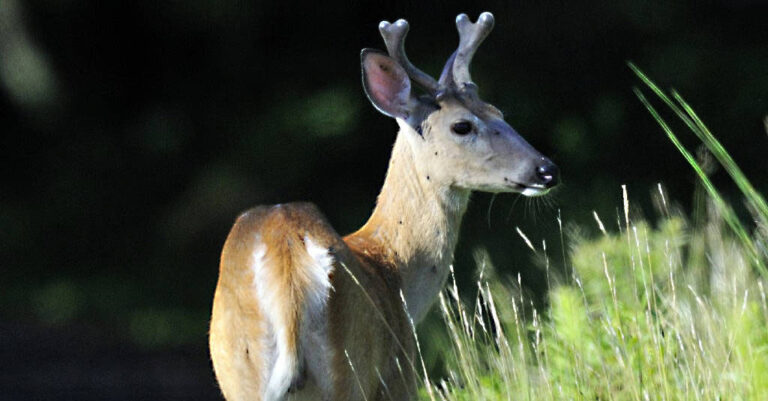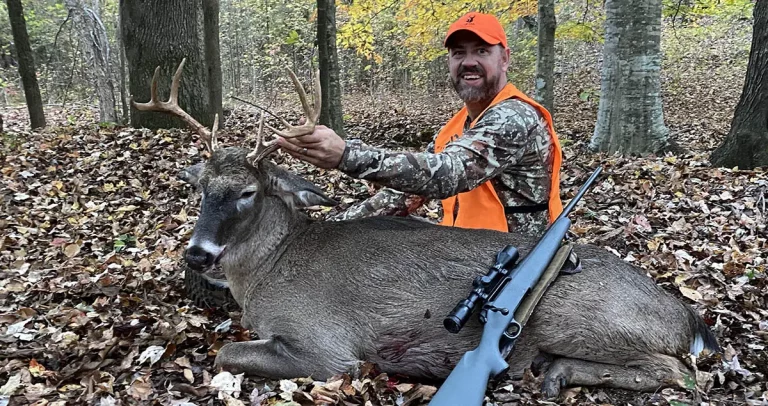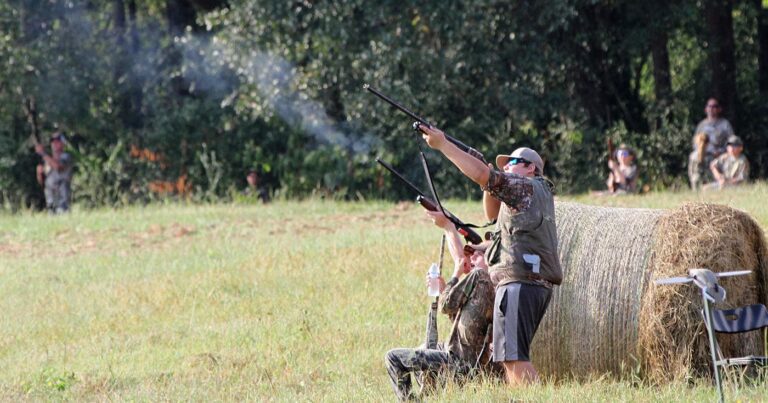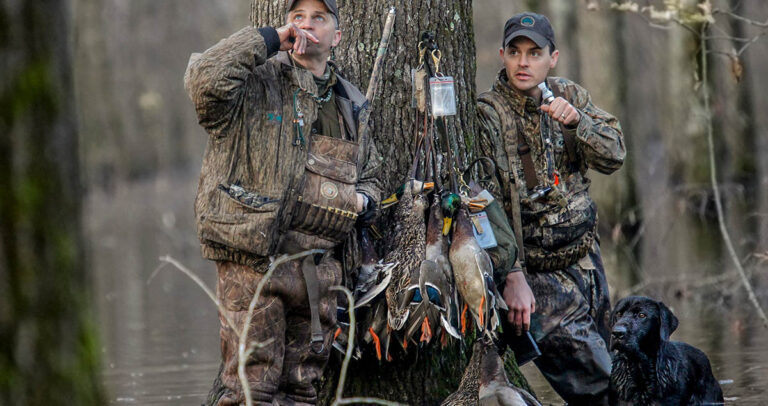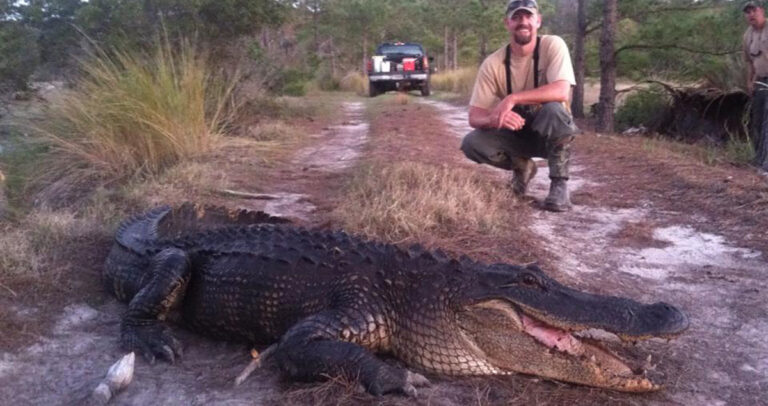Want to Try Public Land Deer Hunting in Georgia? Here’s How to Get Started.
As a 30-year public-land deer hunter and former WMA manager for the Georgia DNR, I know the challenges of hunting deer on public land all too well. You have hunting pressure to contend with, limited season dates, and rules that can be confusing to someone new.
In this article, we’ll dive into how deer hunting on public land differs from private land, the various types of public hunting areas available in the Peach State, common rules and regulations, a little public-land hunting etiquette, as well as some tips for success.
Quick Facts
- Georgia has more than 1 million acres of public hunting land!
- Every tract of Georgia public land has its own specific hunting dates and regulations, and they are often much different than those for private land.
- Some public lands can only be hunted through a quota system that requires advanced application.
- Some public land hunts offer the opportunity to take “bonus deer” that don’t count against your statewide limit.
Public vs Private Land Deer Hunting
The first thing you need to know about hunting on public land in Georgia is that deer season dates and regulations are often much different than they are on private land. How different depends on the type of public land you’re hunting.
Georgia hunters have access to a variety of state and federal lands, including Wildlife Management Areas (WMAs) and Voluntary Public Access areas (VPAs), national forests, national wildlife refuges, Corp of Engineer properties and military bases.
We’ll dive into the specifics of each type area later in the article. Regardless of which you ultimately choose to hunt, you’ll want to check the most recent copy of Georgia’s Hunting Regulations to find the specific hunting dates and information for any area you’re interested in visiting.
Required Licenses and Permits
Hunters using Georgia WMAs, VPAs, and National Forests are only required to have a hunting license, big game permit, and big game harvest log—the same requirements needed to deer hunt on private land.
National Wildlife Refuges, Corp of Engineer property and military bases often require an additional permit.
Baiting
The use of bait is strictly prohibited on all Georgia public lands.
Terminology
There are a few terms you’ll need to know as a Georgia public-land hunter that will make it much easier to understand the rest of this article.
Quota vs Non-Quota Hunts
All state-managed deer hunts on WMAs and VPAs fall into one of two categories: quota or non-quota.
As discussed above, quota hunts require advanced application. The application process takes place between June 1 and Sept. 1 each year, and there is no cost to apply.
On the flip side, non-quota hunts do not require a drawing. Any licensed deer hunter can participate in non-quota deer hunts. The only requirement is that you must sign in prior to hunting. You can do that in-person at the WMA check station, online at gooutdoorsgeorgia.com or on the official Georgia Outdoors app.
Priority Points (aka Preference Points)
Georgia’s state-managed quota deer hunts on WMAs and VPAs work on a priority point system. The way it works is, every year you apply for a deer hunt and aren’t drawn, you get a priority point to use in subsequent years. You can also opt to apply for only a preference point if there’s not a hunt you want to draw. You can continue to accumulate priority points year-after-year until you finally use them to draw a hunt.
The more priority points you have, the better your odds of drawing a hunt. Some quota deer hunts can be drawn without any priority points. Other hunts may require four or more.
Sign In vs Bonus Deer Hunts
Aside from hunts being quota or non-quota, all WMA & VPA deer hunts are also designated as either sign-in or bonus deer hunts. Both require you to sign-in prior to hunting.
The difference is in what you do when you kill a deer. On sign-in hunts, you mark the deer on your harvest log and check it in by phone or online, just as you would if you killed it on private land. Those deer count against your season bag limit of 10 does and two bucks.
Deer taken during bonus deer hunts do not count against your statewide bag limit. They are bonus deer!
On these hunts, when you kill a deer, you take it to the WMA check station and they will put a tag on the deer for you. You DO NOT have to mark it on your harvest log or check it in online.
If you’re fortunate enough to kill your two-buck limit earlier in the season, bonus deer hunts can be a great opportunity to kill a bonus buck.
It’s worth noting that quota hunts can be sign-in or bonus deer hunts, and non-quota hunts can be either, as well.
Types of Georgia Public Lands
Georgia deer hunters are blessed to have more than 1 million acres of public hunting land at their disposal. That includes more than 100 WMAs and VPAs, two national forests, nine national wildlife refuges, multiple Corp of Engineer properties, and three military bases.
In this section, we look at each of those property types, and the key information you need to know about hunting them.
WMAs and VPAs
The Georgia DNR owns or leases over 100 WMAs and VPAs open for hunting and other outdoor recreation.
WMAs are owned or leased by the state and managed by the Georgia Department of Natural Resources (DNR). They vary in size from 40 acres all the way up to 96,000+ acres, and can be found scattered across the state.
VPAs are private lands leased by the DNR ranging in size from 20 to 5,000+ acres. Georgia kicked off the VPA program in 2014 as a way to provide additional hunting opportunities. These privately owned tracts typically have more restrictions than WMAs.
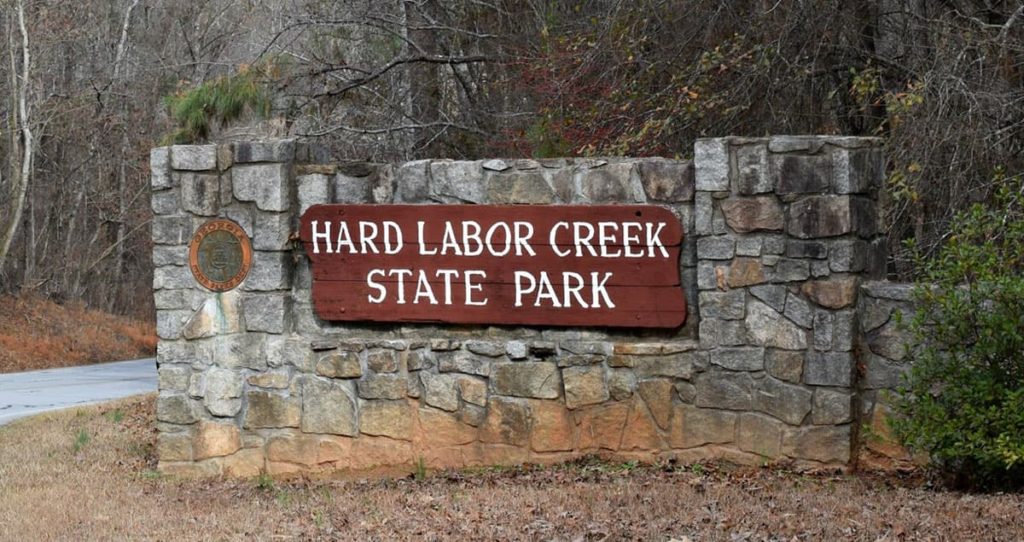
State Parks
A handful of Georgia state parks offer deer hunts to help control the deer population. These are quota hunts that require advanced application.
Deer populations tend to be high in these state parks, so the chance of killing a deer on one of these hunts is excellent. However, demand for these hunts is also high, and it often takes 3+ years to get drawn.
National Forests
Georgia has two expansive national forests: the Chattahoochee National Forest in north Georgia, and the Oconee National Forest in the eastern half of the state. The two combine to cover 867,000 acres across 26 counties!
National forest hunting regulations are typically much less restrictive than state-managed WMAs and VPAs, and season dates closely follow the statewide season. There are some small differences, however, including when you can and can’t shoot does, so be sure to check the current hunting regulations prior to heading afield.
National Wildlife Refuges, Corps of Engineer Property, and Military Bases
I lumped these three property types together because all have somewhat restrictive hunting opportunities. And most require an additional permit and, in some cases, applying for the hunt in advance.
I’ve listed the various properties in each category below, and I would encourage you to check out the current Georgia hunting regulations booklet for specifics if you plan on hunting one of these properties.
I will say that the Corp of Engineer properties around Georgia lakes can provide excellent opportunities to get away from the crowds if you have the ability to access the land by boat.
Hunting Pressure
It’s also important to understand that hunting pressure can be high on public lands. Just know going in that you may run into other hunters. There may be a truck parked in that spot you scouted and can’t wait to hunt.
If you’re prepared for those situations, then it won’t be a big issue. If not, you’re going to be frustrated.
A lot.
From my experience, hunting pressure is rarely an issue during archery deer season. There are exceptions to that on some of the most popular WMAs, like Flint River and Joe Kurz, but I’ve spent many evenings on Georgia WMAs during archery season feeling like I was the only one out there.
Firearms hunting can be a much different experience. Demand is much higher. It can take some legwork to get away from the crowds, but it can be done. I’ll share some tips on that later in the article.
In some cases, the Georgia DNR mitigates that hunting pressure by putting a limit, or quota, on the number of hunters allowed to participate in a hunt. For those quota deer hunts, interested individuals must apply in advance and be drawn to participate.
Public Land Deer Hunting Etiquette
If you’ve spent any time in hunting forums or Facebook groups, you’ve undoubtedly heard some of the horror stories of hunting public land. Most are exaggerated or extreme examples. I’ve hunted public land for decades now and have only had one really bad experience when words were exchanged with another hunter.
Have I been walked in on during a hunt? Absolutely.
Have I walked in on someone else hunting? Yep.
But that’s just part of the experience when hunting public land. If you’re prepared for it, there’s no need for frustration or animosity.
There are some things we can all do to minimize these types of confrontations. It’s often referred to as hunter etiquette. It’s subjective, but most can agree on some basic, common sense “unspoken rules” when sharing public land with other hunters.
Here are a few of mine:
- Treat others the way you’d want to be treated. This one sums up all the others. Don’t do something to another hunter you wouldn’t want done to you.
- Hunting on public land is always first-come, first-served. No matter how much you’ve scouted an area or how many times you’ve hunted it, if you aren’t the first one there, move on. There’s no saving spots with flagging ribbon or by hanging a stand. Be the first one there or go somewhere else.
- Don’t walk around the woods stalking or scouting during a busy hunt, particularly during primetime morning and evening hours. Chances are you’re going to ruin someone else’s hunt. There are exceptions to this, if you know for certain there is no one else in an area. I’ve done it on the last evening of a three-day hunt after the majority of hunters have packed up and left. Just use common sense when deciding when and where to do so.
- Leave the flagging ribbon at home. This one is a personal pet peeve of mine. First off, there is no saving spots, which is what most hunters hanging survey tape are trying to do. Second, no one ever takes the ribbon back down after the hunt. As a former public-lands manager, I can attest to that fact. If I want to hunt a spot, and there’s no vehicle parked nearby, I’m going to hunt it regardless of how much flagging ribbon is tied there.
- Be kind to one another. If you do walk in on another hunter, simply wave and move on. If you happen to run into other hunters at the parking area before going in, go over and talk to them. Get a feel for where everyone is hunting so you can avoid issues during the hunt. And if you see a hunter in need, help them out.
I’m sure there are plenty of others you could add to this list. Feel free to drop them in the comments section below. But it all boils down to treating each other with kindness and respect. Something this world has gotten away from over the years.
Public Land Deer Hunting Tips
If you’re new to public-land deer hunting, here’s a few tips to help shorten the learning curve.
Know the Rules
I know that seems obvious, but I can tell you from my time working on WMAs, that many hunters don’t take time to read the regulations. As I’ve pointed out throughout the article, the rules for each area can be different, so it’s important to know exactly what you can and can’t do on a specific tract of public land, when the seasons are open, and what you need to hunt there.
Scout Early and Often
The real key to success on public land is spending more time learning the area and how deer use it than you do actually hunting. Make it a year-round habit to learn a little bit more of the property every year. The super successful guys that I’ve interviewed on my podcast over the years all spend lots of off-season (and in-season) hours in the field scouting.
Make Some Calls
You can gain a lot of valuable insight by talking with the person or people who know the area best—the wildlife biologist and/or technician who oversees the area. Don’t expect them to give up the best spots. They likely hunt there themselves. But if you give them a call and ask questions that shows you’ve done your own homework, you’ll be surprised what they’ll share.
Trial and Error
Another key part of learning an area is just spending time in the deer stand there. That’s how you learn deer movements, which areas produce and which don’t, where other hunters concentrate and areas that get overlooked, and when the deer transition from feeding to rutting behavior and back to feeding.
Over time, you can use this knowledge to spend more time in productive areas and less time in unproductive areas, and you’re success rate will continue to climb.
Have Patience
The most important piece of advice I can give you about hunting public land is to have patience. It’s not easy. Other people are going to mess you up. It can be downright frustrating.
But if you go in knowing those challenges exist and just focus on enjoying your time in the woods, it will be a much better experience. And that guy who walked in on you may end up becoming a great friend and hunting partner.
Final Thoughts
Hunting Georgia’s public lands can be challenging, but when things finally come together, and you’re able to get that deer you were after, there is no greater sense of accomplishment.
And when you look at the prices for hunting leases these days, you can’t beat having access to over 1 million acres for FREE!
Good luck this season, and if you do have some public-land success, be sure to share it with me at brian@georgiaafield.com, so we can share it on our social channels.

